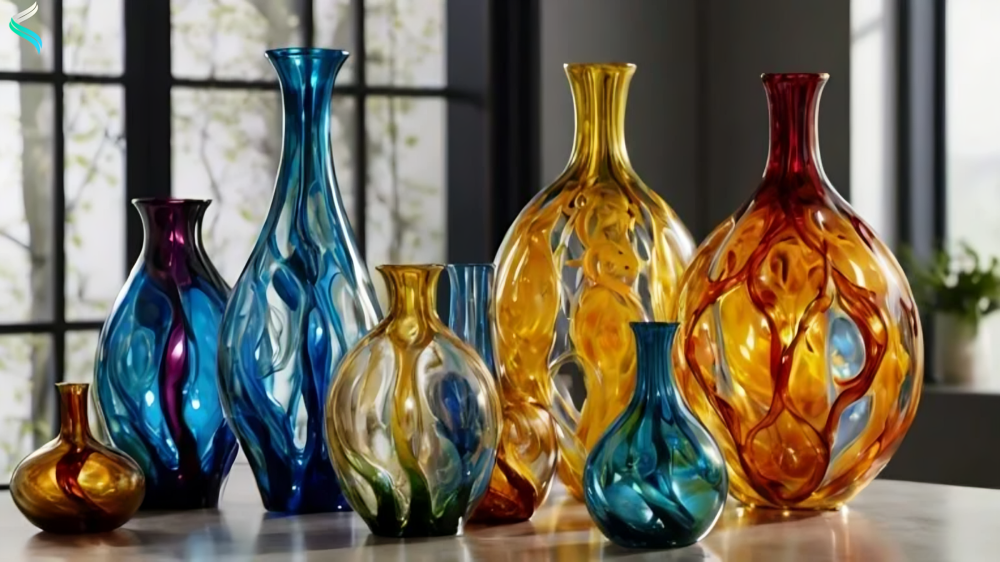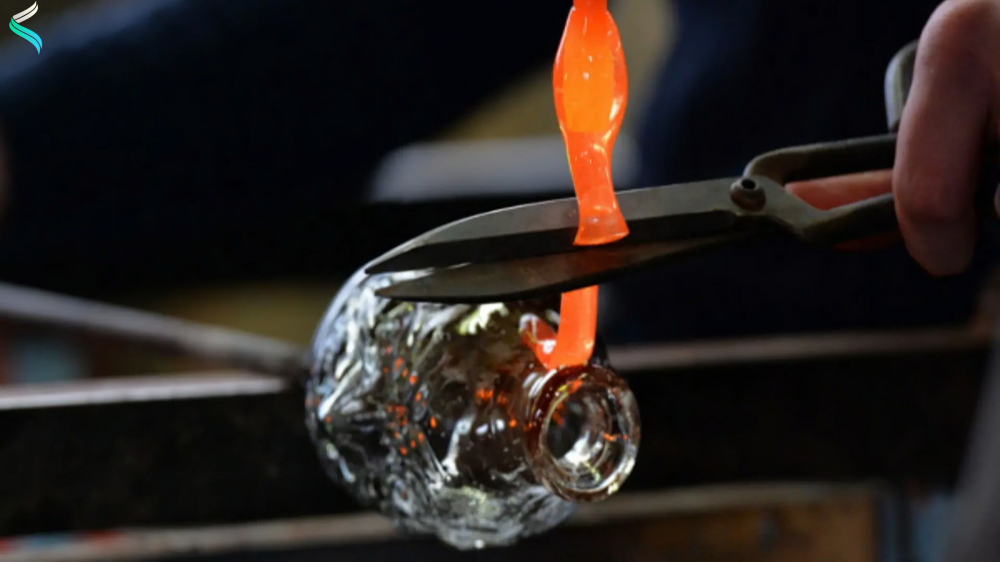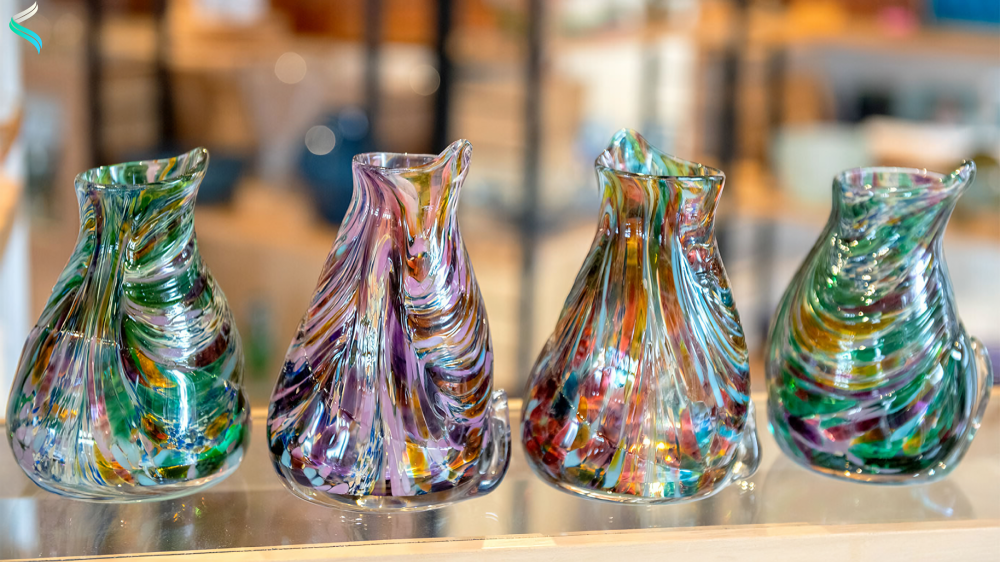Blown glass, an art form with roots that trace back centuries, combines the elegance of craft skills with the beauty of molten glass. This ancient practice has evolved over time, creating stunning pieces that range from delicate sculptures to functional objects like vases, chandeliers, and ornaments. Today, blown glass has gained a revered place in both artistic and commercial spheres, with artists around the world using the medium to push the boundaries of creativity and innovation. In this article, we explore the fascinating world of blown glass, its history, techniques, applications, and why these stunning creations continue to captivate audiences.
The History of Blown Glass
The origins of blown glass date back to around 50 BC in the ancient Roman Empire, though it is believed that the technique was first discovered by Phoenician glassmakers. The technique of blowing glass involved gathering molten glass in a blowpipe, then using air to form it into various shapes. This process marked a significant departure from traditional methods of glassmaking, such as casting and molding.
In the Roman Empire, blown glass was used to create items like bottles, bowls, and decorative items, making it a significant part of daily life. The technique spread throughout Europe, with Venice emerging as the center of glassmaking in the Middle Ages. Venetian glassmakers were particularly known for their skill in producing intricate, delicate pieces that were both beautiful and functional. By the Renaissance, Venetian glassmakers had perfected their craft, and blown glass became synonymous with artistry and sophistication.
Through centuries of experimentation and refinement, blown glass evolved into a true art form, with glassblowers finding new ways to manipulate and shape glass into almost any form imaginable. Today, it continues to be an integral part of the contemporary art world.

The Blown Glass Process: How It’s Made
The procedure of making blown glass is a sensitive and complex one that calls for ability, precision, and artistry. The process begins with gathering molten glass, which is heated to extreme temperatures in a furnace. The glassblower uses a blowpipe to collect a glob of this molten glass and starts the process of shaping it. Here’s an overview of the process:
- Gathering the Glass: The artist gathers molten glass at the end of the blowpipe, which is heated to a temperature of around 2,000°F (1,093°C). At this level, the glass is malleable and may be fashioned.
- Blowing and Shaping: The glassblower blows air into the blowpipe to create a bubble in the molten glass. Using a combination of blowing, swinging, and manipulating the glass, they gradually shape the piece into the desired form. Tools like shears, paddles, and blocks are used to refine the shape.
- Coloring and Decoration: Blown glass can be decorated with various colors, patterns, and textures. This can be achieved by adding metal oxides to the molten glass or by rolling the piece into colored glass chips. Some artists also use techniques such as engraving, etching, and sandblasting to add intricate details.
- Annealing: Once the piece is shaped, it is slowly cooled in an annealing oven. This process, called annealing, allows the glass to cool evenly and prevent cracks or stress fractures from forming.
- Finishing Touches: After the piece has cooled, the glassblower may trim off excess glass or add final touches such as handles or bases. The piece is then polished or etched, and in some cases, additional decoration is added.
This process of blown glass creation requires years of training and experience, and each piece reflects the skill and artistry of the crafts worker. The beauty of blown glass lies not just in its visual appeal, but in the fact that each piece is unique, with its own characteristics and imperfections that make it one-of-a-kind.

Types of Blown Glass Creations
Blown glass can take many forms, from functional pieces to purely decorative art. The versatility of the medium permits artists to experiment with unique shapes, hues, and textures. Below are some of the most popular types of blown glass creations:
- Glass Sculptures: Artists often use blown glass to create intricate sculptures that push the boundaries of what glass can do. These sculptures can range from abstract forms to lifelike representations of animals, plants, or human figures. Artists can manipulate the glass to create fluid shapes, intricate patterns, and even incorporate light elements, creating mesmerizing and dynamic works of art.
- Vases and Bowls: One of the most common forms of blown glass is vases and bowls. These pieces range from simple and functional to elaborate and ornamental. Artists may use colored glass, layering techniques, and unique shapes to create stunning vessels that can be used for decorative purposes or as functional containers for flowers or other objects.
- Glass Ornaments: Blown glass ornaments are popular during the holiday season, and many artisans create beautiful and intricate glass ornaments that are hand-blown, painted, and decorated. These ornaments can range from classic shapes like baubles and snowflakes to whimsical designs such as animals and scenes.
- Chandeliers and Light Fixtures: Blown glass is often used to create stunning chandeliers and light fixtures. The translucency of the glass and the ability to manipulate its form allow for the creation of pieces that are not only functional but also pieces of art. Whether it’s a grand chandelier for a luxury hotel or a smaller pendant light for a home, blown glass adds an elegant touch to any space.
- Glassware and Tableware: From wine glasses to pitchers and bowls, blown glass is often used in creating beautiful, functional tableware. Each piece of glassware is unique, with delicate curves, colors, and designs that make dining experiences feel more special.
- Glass Jewelry: Artists can also use blown glass techniques to create jewelry, including necklaces, bracelets, earrings, and rings. These pieces can be colorful and abstract or delicate and detailed, showcasing the versatility of blown glass in fashion and design.
The Global Appeal of Blown Glass
While blown glass has its origins in ancient civilizations, it remains a global art form that has evolved across cultures. Today, artists from all over the world practice this craft, each bringing their own techniques, designs, and innovations to the table.
One of the most well-known places for blown glass is Venice, Italy, specifically the island of Murano. The Murano glassmakers have been perfecting the art of glassblowing for centuries, and the island remains a hub for high-quality blownes glass. Murano glass is known for its intricate designs, vibrant colors, and high level of craft skills.
In the United States, places like Seattle, Washington, and Corning, New York, have also become centers for the blownes glass industry, with artists pushing the boundaries of the medium and creating innovative works of art. Today, you can find galleries, museums, and workshops dedicated to blownes glass art all over the world, with a growing appreciation for this timeless craft.

The Future of Blown Glass
As the world of art and design continues to evolve, blownes glass continues to thrive as both an art form and a medium for innovation. Artists are experimenting with new techniques, pushing the boundaries of glass’s capabilities, and creating pieces that blend technology and art. For example, some artists use blownes glass in combination with other materials, such as metal or ceramics, to create mixed-media pieces that are both functional and sculptural.
Furthermore, advances in technology have allowed artists to incorporate elements such as LED lights into their blownes glass creations, adding a new dimension to the way we interact with these pieces. Blownes glass will likely continue to evolve and find new applications in various fields, from architecture and interior design to fashion and public art installations.
Why People Love Blown Glass
The enduring popularity of blownes glass can be attributed to its beauty, versatility, and uniqueness. Each piece is hand made, making it one in every type. Whether it’s the delicate curves of a vase, the intricate detail of a sculpture, or the vivid colors of a decorative ornament, there is something about blownes glass that captivates the viewer. It blends the organic with the artistic, the functional with the aesthetic, creating a sense of wonder and admiration for both the craft and the artist behind each piece.
More: Reddit
Conclusion
Blown glass is an historical art form that continues to captivate and inspire. From its humble beginnings in the Roman Empire to its modern-day applications, blowns glass has evolved into a versatile and dynamic medium. Artists around the world continue to push the boundaries of what is possible with this delicate material, creating stunning creations that blur the line between art and functionality.
Whether you are a collector, an enthusiast, or simply someone who appreciates fine craft skills, blowns glass offers something for everyone. With its timeless beauty, intricate details, and ability to capture light in a way that no other medium can, it’s no wonder that blowns glass has remained a beloved art form for centuries.
FAQ: Blow Glass
- What is blown glass?
- Blown glass is a sort of glassware created by means of inflating molten glass into a bubble using a blowpipe. This process allows artisans to shape the glass into various forms, creating unique and beautiful pieces.
- How is blown glass made?
- Blown glass is made by gathering molten glass onto a blowpipe, shaping it with tools and blowing air into it to form shapes. The piece is then cooled in an annealing oven to prevent cracks.
- What types of items are made from blown glass?
- Blown glass is used to make a variety of items, including sculptures, vases, bowls, ornaments, chandeliers, and even jewelry.
- Where is blown glass created?
- Blown glass is made worldwide, with notable centers of production in Venice (Murano), Italy, and other locations like Seattle, USA, and Corning, New York.
- Why is blown glass so unique?
- Each piece of blown glass is handcrafted, making it one of a kind. The combination of craft skills, color, and design ensures that no two pieces are exactly the same.











